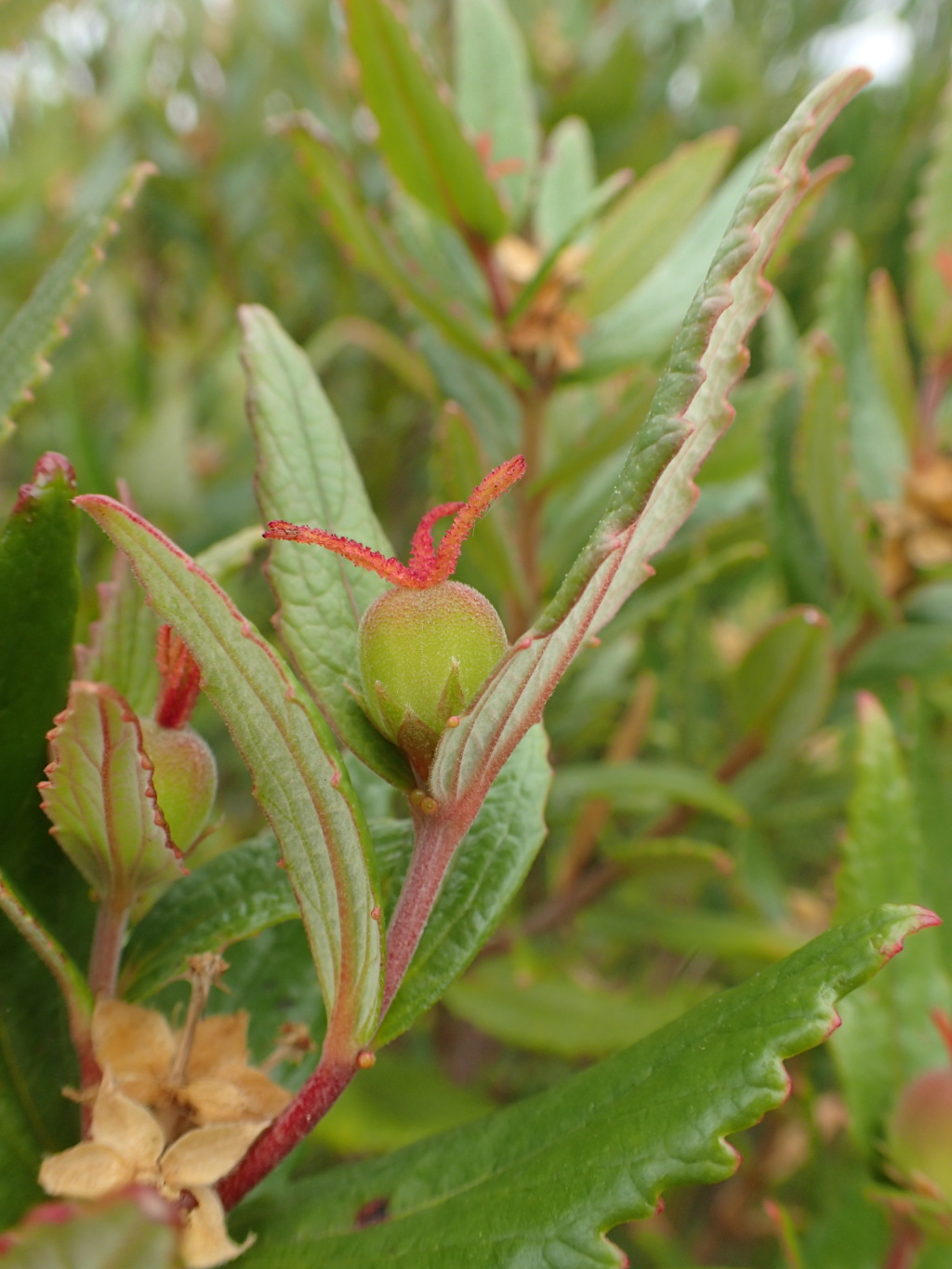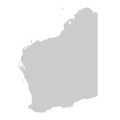Adriana quadripartita
(Labill.) Müll.Arg Coast Bitter-bushSpreading shrub 1–3 m high, glabrous or tomentose; stems reddish. Leaves sessile to subsessile usually opposite, ovate to lanceolate, mostly 2–12.5 cm long, 5–60 mm wide, acute to obtuse, margins distantly toothed and slightly revolute, rarely entire, rarely shortly trilobed, upper surface dark green, glossy, sparsely tomentose or glabrous, veins obscure, lower surface paler, glabrous to tomentose, veins distinct. Male spikes 3.5–25 cm long; female spikes 1–5 cm long. Male flowers with sepals 5–6 mm long. Female flowers with sepals 3–6, 3–12 mm long. Flowers Jul.–Feb.
Wim, GleP, Brid, VVP, GipP, OtP, WaP, GGr, WPro. Also WA, SA. Apart from disjunct inland occurrences at Mt Arapiles and near Ouyen, apparently confined to coastal and near-coastal areas west from Wilsons Promontory.
Glabrous specimens sometimes appear amongst the more usual hairy plants (the latter formerly regarded as a distinct entity, Adriana klotzschii), but the two forms are otherwise identical and not worthy of taxonomic separation (Gross & Whalen 1996).
Jeanes, J.A. (1999). Euphorbiaceae. In: Walsh, N.G.; Entwisle, T.J., Flora of Victoria Vol. 4, Cornaceae to Asteraceae, pp. 55–82. Inkata Press, Melbourne.
 Spinning
Spinning


